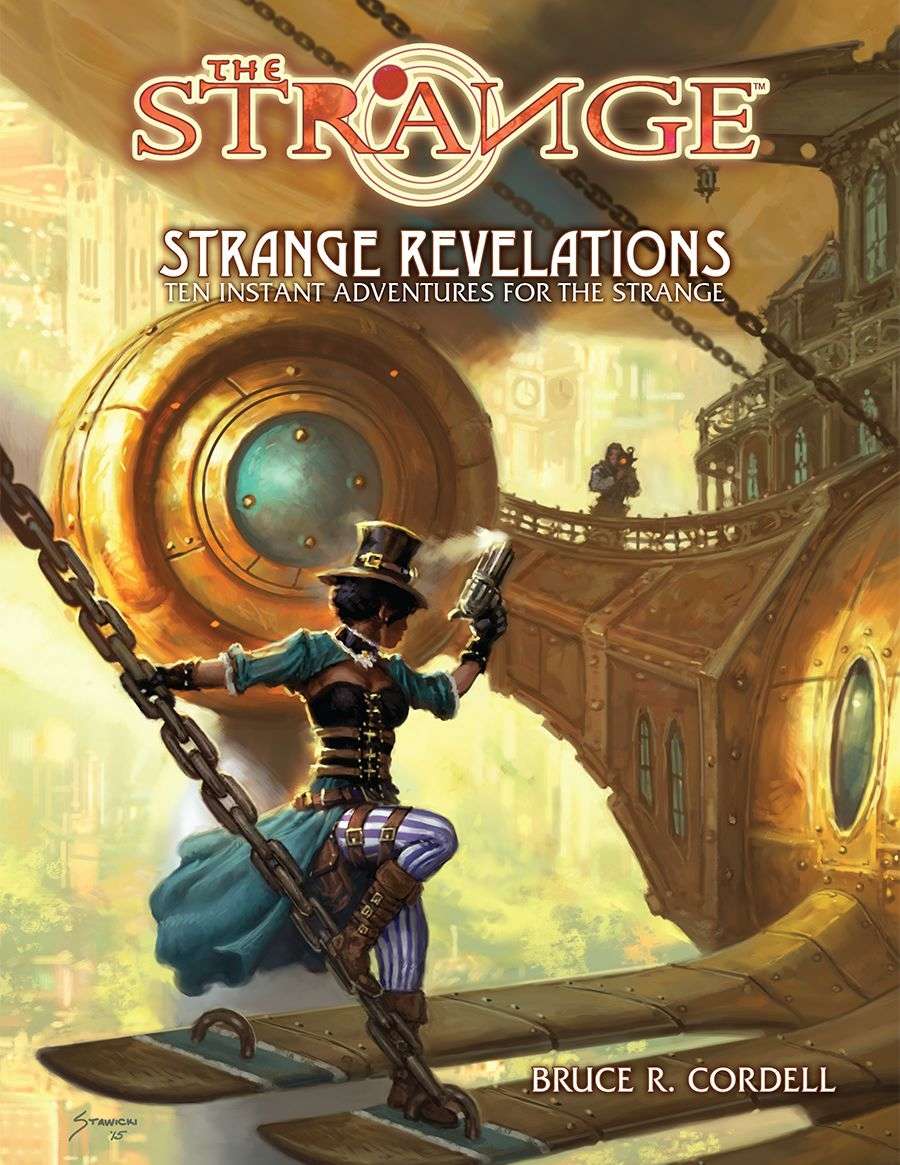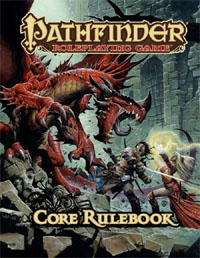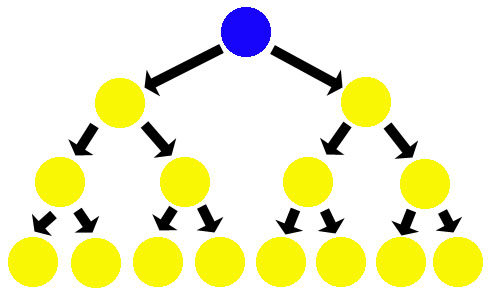Here’s my random tip for using Idea rolls as a GM:
Don’t.
Let me start by explaining what I’m talking about: In Call of Cthulhu, an Idea roll “represents hunches and the ability to interpret the obvious.” In some of the older scenarios published for the game, this roll would actually be used to prevent players from having their characters take certain courses of action because the character wouldn’t know to do them — sort of aggressively preventing player expertise from trumping character expertise.
There are some obvious problems with that, too, but what I’m interested in right now is the far more common technique of using the Idea roll to tell players what they “should” be doing. For example, if the players are talking about how they can get an audience with a casino owner, the GM might call for an Idea roll and say, “You could disguise yourselves as high rollers.” Or when the PCs stumble onto a bloodstained altar in the center of a stone circle, the GM might call for an Idea roll and then say, “You could try putting that idol you found earlier on the altar!”
Even in games that lack a specific mechanic like this, you may see similar techniques improvised (usually with some form of Intelligence check).
GM-INITIATED IDEA ROLLS
The basic function of the Idea roll is essentially like using a walkthrough in a video game: You don’t know what to do, so you have to consult a guide that can get you past the point where you’re stuck. A GM-initiated Idea roll, though, is often more like having an obnoxious friend sitting with you who’s played the game before and simply WILL NOT shut up and let you play the game for yourself.
If you’re a GM prepping a scenario and you come to a place where you think an Idea roll will be necessary, that’s a really clear sign that you need to DO BETTER. Saying, “I need an Idea roll here,” is basically saying, “I have designed a scenario where the players are going to get stuck here.” Instead of prepping an Idea roll, figure out some way to redesign the scenario so that the players won’t get stuck there. (The Three Clue Rule will often help.)
What about run-time Idea rolls? In other words, you’re currently running the session, you can see that the players are irreparably stuck, and you need to fix the problem. Well, there are two possibilities:
First, they’re not actually stuck, in which case you don’t need to use an Idea roll.
Second, they ARE stuck and definitely need help to get unstuck. In which case, you shouldn’t be rolling the dice because failure is not actually an option: You need to give them information. Therefore you should not be rolling to see whether or not they get it.
PLAYER-INITIATED IDEA ROLLS
On the other side of the screen, a player-initiated Idea roll is generally more viable: This is basically the players sending up an emergency flare and saying, “We’re lost! Please send help!” To return to our analogy of the video game walkthrough, this is the player who has been stymied to the point where they’re no longer having fun and just want to be able to move on in the game.
In my experience, it should be noted, what such players are looking for is often not the solution; what they are looking for is an action. They feel stuck because they don’t know what they should be doing. A Matryoshka search technique, therefore, is often a great way to respond to this.
Something else to look for is the clue that they’ve overlooked. Not necessarily a clue they haven’t found, but one which they don’t realize is actually a clue, which they’ve radically misinterpreted, or which they’ve completely forgotten they have. For example:
- “You realize that patent leather can also be used for furniture, not just shoes.”
- “While S.O.S. could be a cry for help, couldn’t it also be someone’s initials?”
- “You suddenly remember that you still have Suzy’s diary in the pocket of your trench coat. Didn’t she mention something about the color purple, too?”
Trail of Cthulhu innovated a cool mechanic along these lines for its Cthulhu Mythos skill: You can use this skill to “put together the pieces and draw upon the terrible knowledge that you have been subconsciously suppressing, achieving a horrific epiphany. The Keeper provides you with the result of your intuition, sketching out the Mythos implications of the events you have uncovered.”
There are two important features to this mechanic: First, it doesn’t require a roll. (Again, if the players need help, then denying it to them on the basis of a dice roll doesn’t make sense.)
Second, it has a cost: The sudden insight into the terrible realities of the universe will cost you Stability and, quite possibly, Sanity. Importantly, this cost is NOT exacted “if the player deduces the horrible truth without actually using [the] Cthulhu Mythos ability.” The cost, in my experience, not only dissuades players from relying on the mechanic instead of their own ingenuity, it also enhances the sense of accomplishment they feel when they solve the mystery or gain the insight without using the mechanic.
The 7th Edition of Call of Cthulhu has similarly modernized the Idea roll, using a fail forward technique where a failure still gets the PCs the necessary clue/course of action, but also results in some sort of negative consequence: Getting the clue might bring you to the attention of the bad guys; or you might waste weeks of time digging through a library before finally stumbling across the right reference; or, like Trail of Cthulhu, the insight might force a Sanity check.
Another cool technique it suggests, particularly in the case of failing forward, is to aggressively reframe the scene: Jump directly to the point where the PCs have followed the lead and gotten themselves into trouble as a result.
A final interesting variant here is to make the Idea roll concept diegetic instead of non-diegetic; i.e., to make it a decision the character makes instead of the player. In a fantasy setting, for example, the character might literally make a sacrifice to the Goddess of Knowledge in order to receive a divine vision.
GM DON’T LIST #10.1: TELLING PLAYERS THE PLAN
Like an aggressive Idea roll on steroids, some GMs will go so far as to just literally tell the players what their characters will be doing for the entire scenario.
For example, I was playing in a convention one-shot where we were street samurai who got hired to be ringers on a Blood Bowl team in order to rig a high-stakes game. This was a really cool premise, turning the usual expectations of the game on its head and giving us an opportunity to explore how the PCs’ heist-oriented abilities could be used in a completely novel environment.
Unfortunately, the session quickly went completely off the rails. Rather than letting the players make any meaningful decisions, the GM had pre-scripted every play of the game: We were reduced to simply rolling whatever skill had been scripted for us. (It didn’t help that the rolls themselves were essentially pointless since the outcome of every drive and most of the plays had ALSO been planned ahead of time.)
This was an extreme example of something closely related to GM Don’t List #7: Preempting Investigation, but I bring it up here mostly because I’ve seen several GMs who use Idea rolls to similar (albeit usually less absurd) ends. These game are characterized by the players making an endless stream of Idea rolls, with the GM constantly saying things like, “Pierre [your character] thinks he should come back and check out the Le Petit Pont after dark.” Or, “You could probably get a pretty good view from the top of Notre Dame. You’ll need to figure out some way to get up to the top of the towers.” Or even, as literally happened in one game, “Rebecca thinks she should stab the Archbishop in the chest.” (“No, really, she thinks this is really important.”)
Basically: Don’t do this. Present your players with problems, not solutions. Give them the space to mull over a situation and figure out what they want to do (or what they think they need to do) in response to that situation.





















